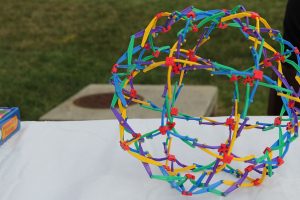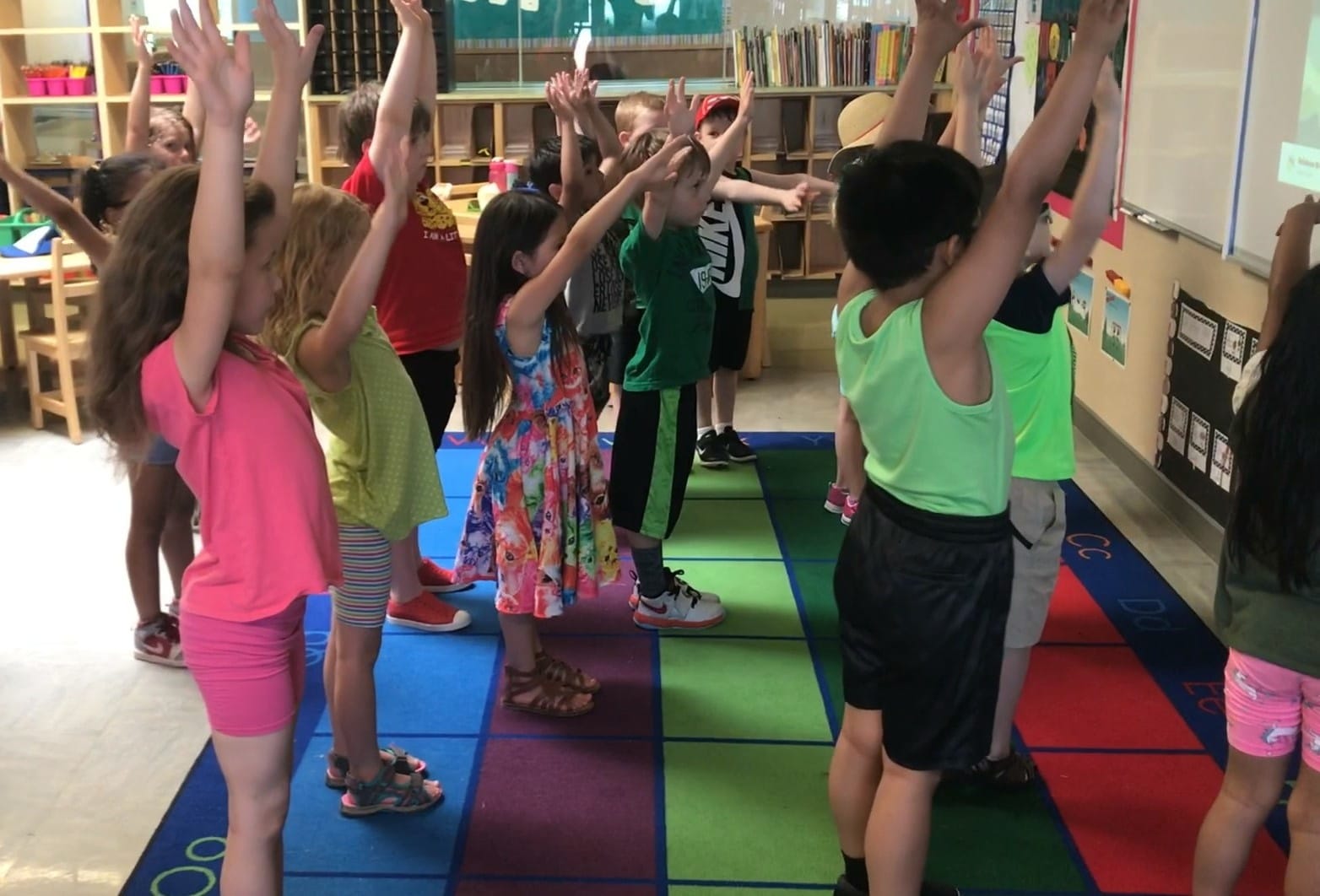Over the 15 years we’ve been blogging, it’s been a joy every time we’ve been able to share the experiences of teachers, counselors, and other helping professionals using Yoga Calm in their work with children. Their observations and reflections offer such great models for others to learn from.
In the post below, originally published in the summer of 2009, an early-adopter, Debi Doyle, described some of how she was adapting Yoga Calm in her work with kids at the Washington state school where she worked as a counselor. We remain grateful to her for allowing us to share her experience…
Lately, I have been focusing on breath work with my students, trying to decide how to fuse this with the social skills lessons we already do. Recently, I discovered one way.

 On Mondays, I see six classes, and on this particular day, a second grade class was the first to come. As they did, I remained seated, quietly moving a Hoberman sphere in rhythm with my breath. It was my first time using this tool, and I was very curious to see how effective it could be with the variety of classes that I see.
On Mondays, I see six classes, and on this particular day, a second grade class was the first to come. As they did, I remained seated, quietly moving a Hoberman sphere in rhythm with my breath. It was my first time using this tool, and I was very curious to see how effective it could be with the variety of classes that I see.
Without a word, the students entered in their normal fashion and sat in a circle on the floor. In less than a minute, the room was filled with 25 peacefully breathing second graders.
I asked if the students knew what their bodies were doing as they watched the “breathing ball.” One of the boys answered, “I’m breathing along with it.”
At this, I gave him a turn to sit in my spot and use the sphere. As he did, I got a small drum out and drummed in rhythm to his movement.
After a while, I asked another student if she would like a turn and asked the first student if he would like to take a turn on the drum. I briefly explained the drum’s purpose to him, and with that, the pair of students began, with the class silently following for a bit of time.
I then asked the class if they had any compliments for the pair. Without question, they received some of the most heartfelt and sincere compliments I have heard a group of students give.
All this activity was a perfect transition to talk about our breath at play, rest and while learning. Using the Hoberman sphere, I showed them their recess breath, running to line up, a few big sighs and then how each of them could calm their minds and bodies just by using their breath.

 In another class, I gave the sphere to some kids on the Autistic spectrum. One who rarely has a successful time in my room was able to enter my class and join us quietly that day. Without a word, he watched what was going on and followed what he saw. I gave him a turn with the sphere, which he did really well. When it was his turn to drum, he worked very hard to figure out how to find a quiet rhythm. At first, he banged loudly. Then he adjusted to a quieter strike but took the stick back with great force. I noticed many of his classmates cringing at this, then relaxing when they saw how gently he struck the drum. We saw that he was just using an arcing motion to beat the drum – the best way he found to make the sound soft.
In another class, I gave the sphere to some kids on the Autistic spectrum. One who rarely has a successful time in my room was able to enter my class and join us quietly that day. Without a word, he watched what was going on and followed what he saw. I gave him a turn with the sphere, which he did really well. When it was his turn to drum, he worked very hard to figure out how to find a quiet rhythm. At first, he banged loudly. Then he adjusted to a quieter strike but took the stick back with great force. I noticed many of his classmates cringing at this, then relaxing when they saw how gently he struck the drum. We saw that he was just using an arcing motion to beat the drum – the best way he found to make the sound soft.
As I watched, I noticed how I had to bite my tongue a couple times to allow him to find his way. I became aware of how often we jump in to correct those who learn in an unconventional manner. Instead of him getting the message, “You can’t; let me show you,” he was able to experience, “You will figure it out; you are capable.”
I love learning from kids.
During the following Compliments activity, many of this boy’s peers were able to express to him how they liked how he had adjusted his drumming. They told him how they saw how hard he was concentrating. No wonder he came in the next week all excited for more! This kid had rarely gotten any communication from his peers, let alone positive words. Now he was being noticed for his teamwork and perseverance.
I am really beginning to see how beneficial it is to use what I have learned in Yoga Calm and integrate it into the Second Step lessons in the classroom. At this point, I am not sure the kids would let me go back to the way we did things without Yoga Calm.

